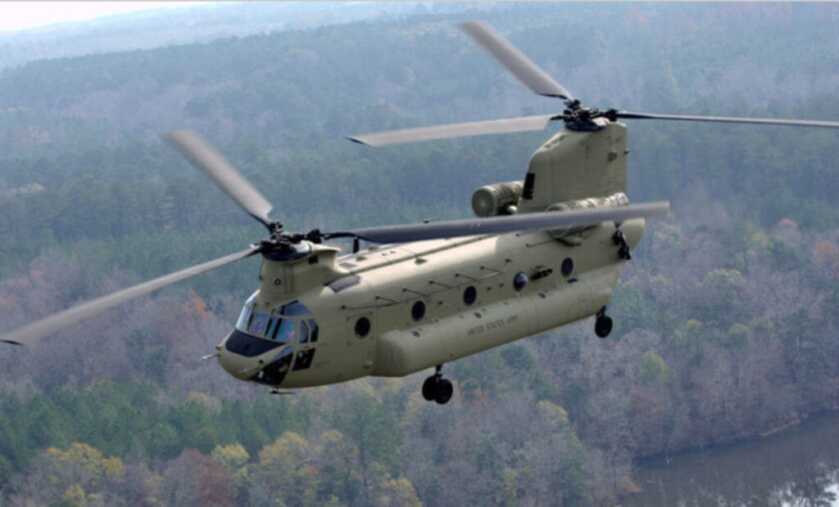
PFC Caesar Martinez was utterly terrified. More than at any other time in his short nineteen years on the planet or six weeks in this godforsaken country, Martinez was convinced he was going to die. A rifleman with A Company, 1st Battalion, 27th Infantry, Martinez tumbled out of a UH-1 Slick helicopter shortly after noon on 19 JUL 66 and fell right into hell.
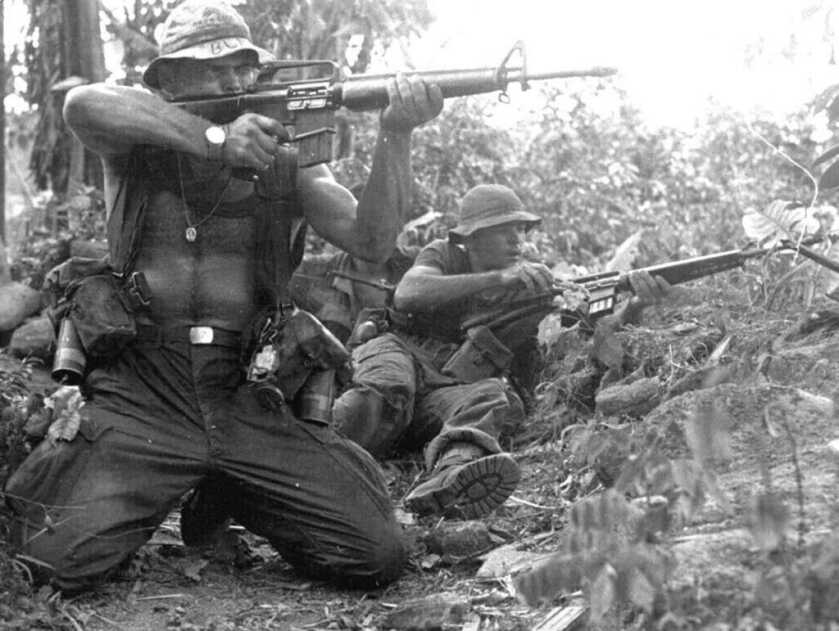
This smoking hot LZ near Trang Bang in the Tay Ninh Province of Vietnam had undoubtedly been somebody’s great idea. Martinez was sure there had been a plan, but nobody had bothered to tell him much about it. For now, he cued off of his squad leader and pumped 5.56mm rounds through his M16 rifle eighteen at a time on fully automatic into the surrounding jungle. At this rate, his ammo wouldn’t last long. As his buddies got hit and chaos reigned he felt the terror welling up in his chest.
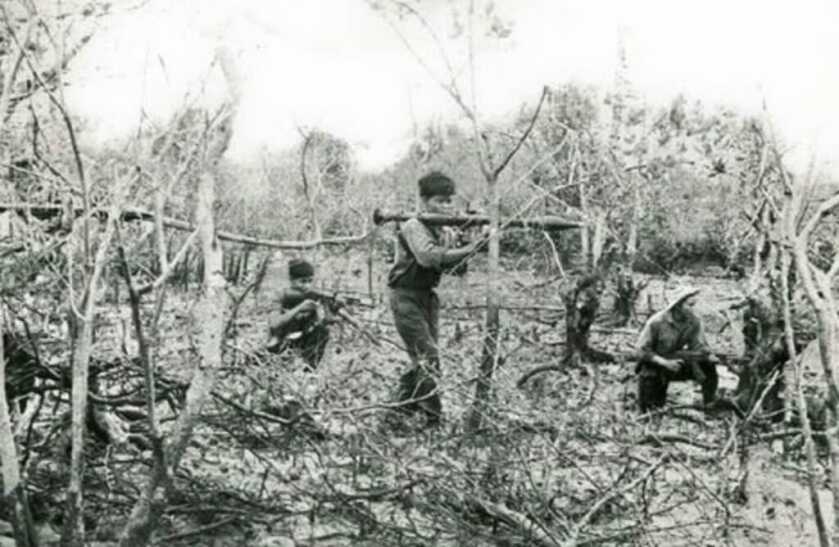
He wanted to run, but there was no place to go. Martinez and his buddies were surrounded by god-only-knew how many VC. Hidden nearby in the thick jungle, the Cong hit the 1/27th Infantry Wolfhounds repeatedly with B40 rockets along with suffocating AK and SKS rifle fire.
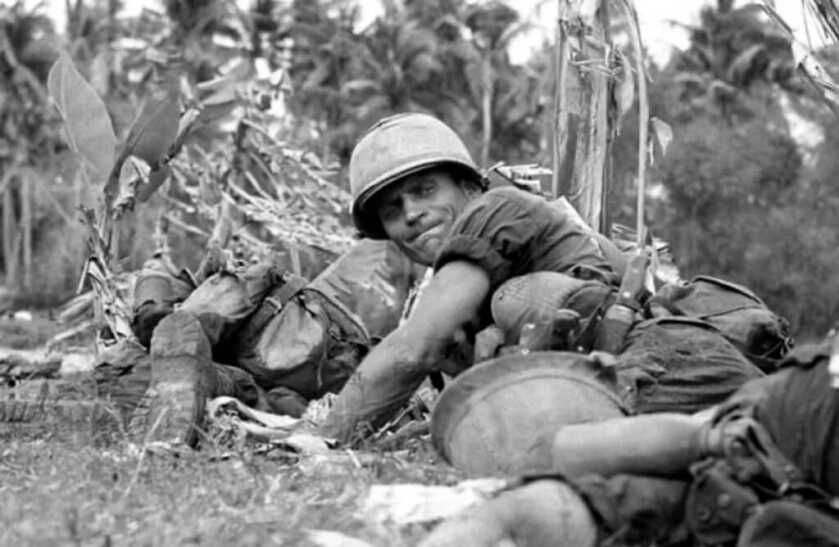
The VC pulled close to negate the effectiveness of American fast movers spitting napalm and Snakeye gravity bombs. As the Casualty Collection Point grew crowded and their ammo dwindled, the situation became desperate for the Wolfhounds.
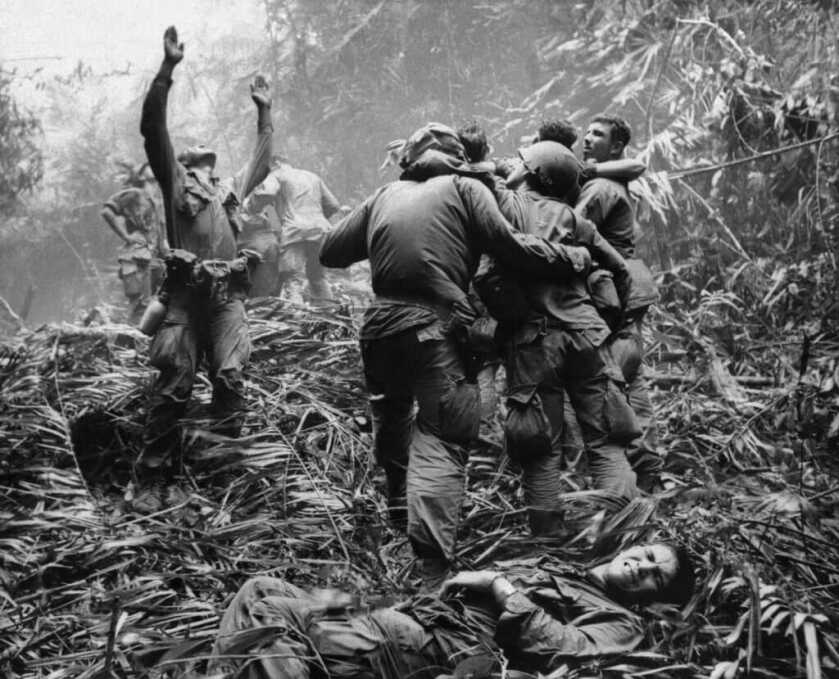
Beyond the ear-splitting din of small arms fire both outgoing and incoming, the bone-shaking jolt of hand grenades, and the dull crump of 40mm M79 rounds came a familiar rhythmic thumping. The heavy throb of massive CH-47 cargo helicopters seemed incongruous in the midst of this full-bore firefight. The desperate grunts looked up and wondered what lunatic had brought Chinooks into this little corner of hell.
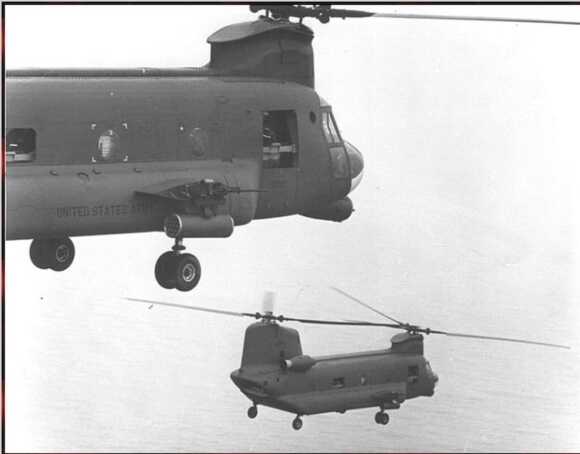
The two enormous gunships opened up, and the very sky itself seemed rent asunder. Explosive projectiles from fast-firing 20mm cannon, clouds of screaming 2.75-inch rockets, the steady cadence of explosive automatic 40mm grenade launcher rounds, and a sleeting storm of .50-caliber slugs chewed the nearby jungle to splinters, shredding the attacking VC along with it. Thus the Viet Cong received their rude introduction to Guns-A-Go-Go.
Combat Relativity
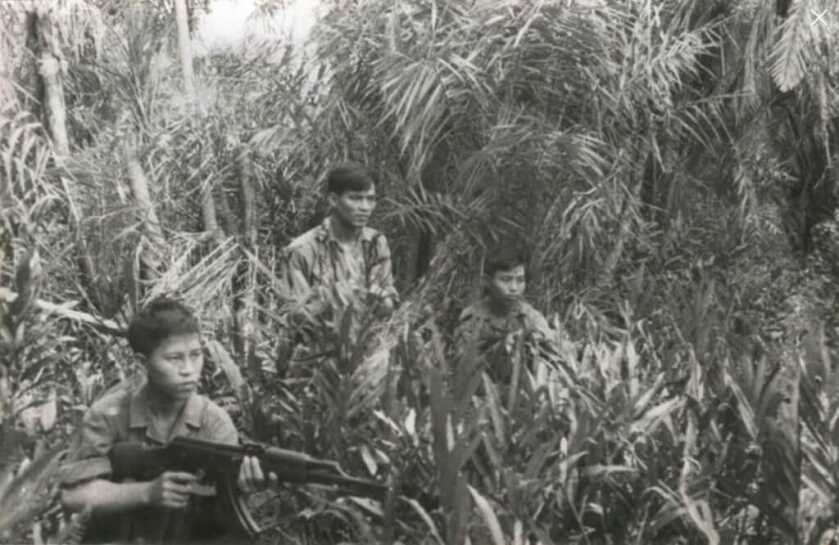
The Viet Cong were in general dedicated, tough, and capable irregular soldiers. In today’s parlance, we would call them insurgents. In July of 1966, they were utterly ferocious and absolutely everywhere.
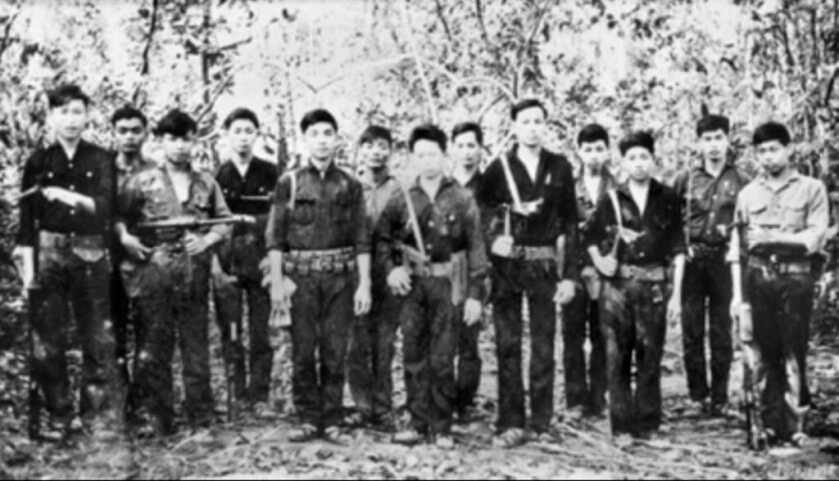
The Cong looked just like the natives and therein rested the problem. They enforced their own form of oppressive jungle justice as the need arose. They also frequently found support among rural villagers. The ability to melt in and out of the surrounding civilian population made the VC almost impossible to eradicate. In combat, they were single-minded, cunning, and ruthless.
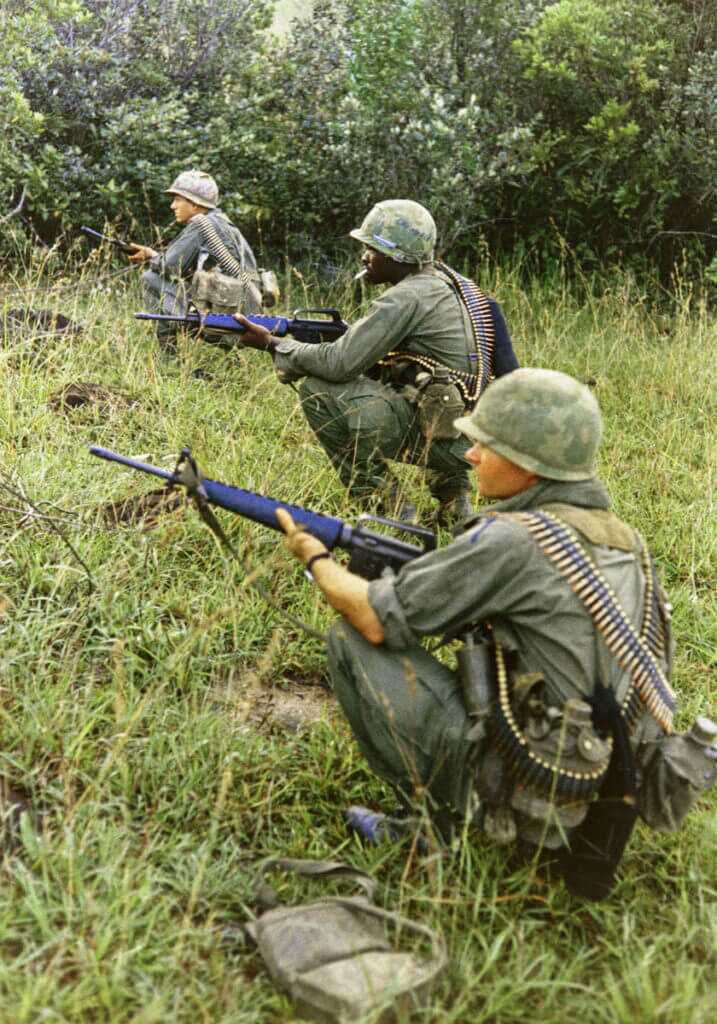
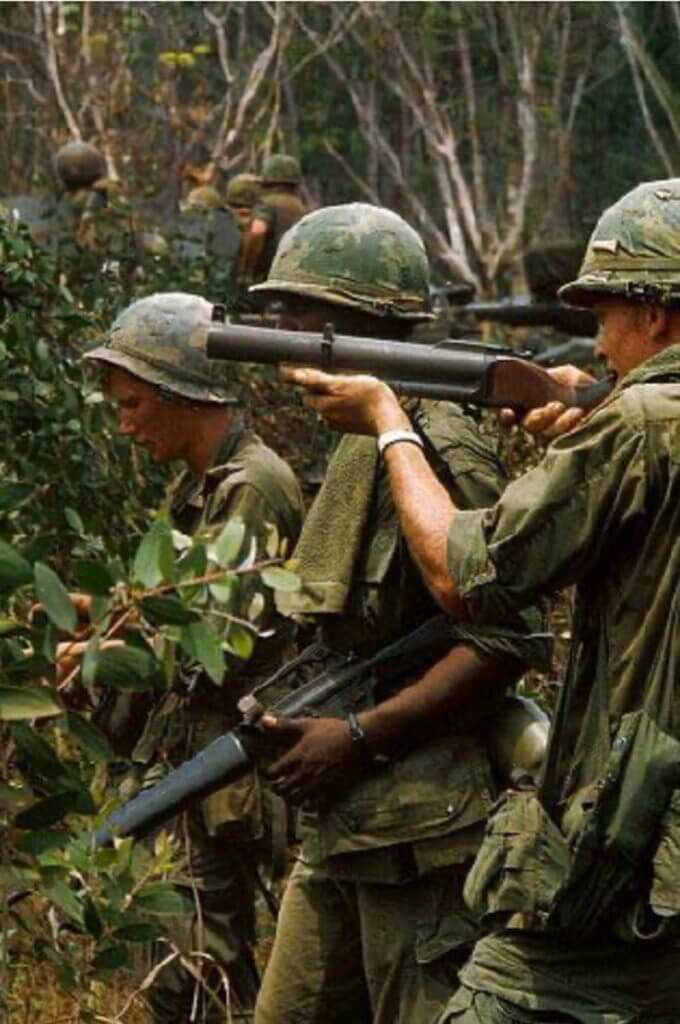
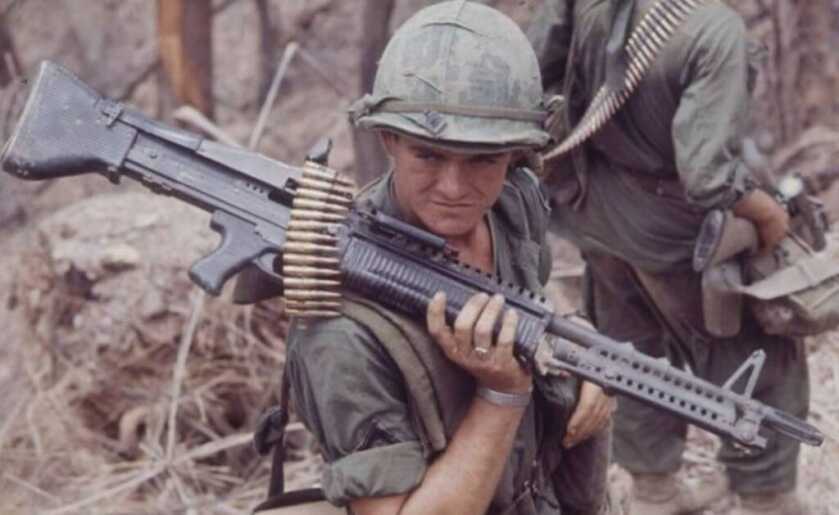
The American Infantry company in 1966 was equipped primarily with M16 rifles, M79 grenade launchers, and M60 machineguns. These weapons provided American combat formations with an unprecedented volume of organic firepower. However, it wasn’t the M16 or the Thumper or even the Pig that was the greatest threat to the VC. It was the man-portable PRC-25 radio.
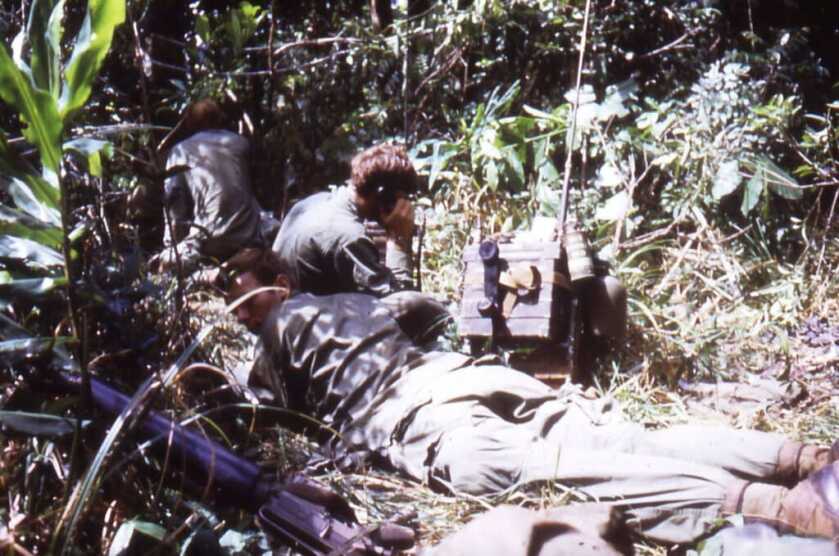
Using the PRC-25, the individual company commanders had access to the mighty fist of the United States military. On 19 JUL 66 that PRC-25 radio summoned the Go-Go-Birds.
The Most Powerful Helicopter Gunships Ever Built
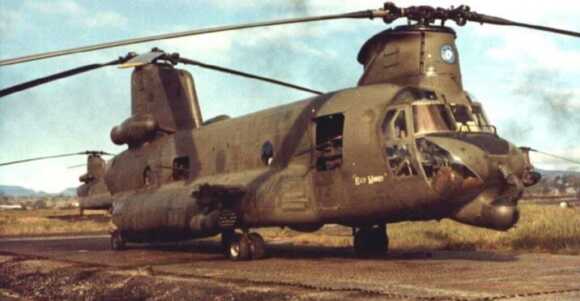
These unique helicopter gunships began life as A-model CH-47 heavy lift cargo helicopters. They always worked in pairs, and there were only four aircraft converted for this mission. Their fiery little experiment was to run for six months split between Vung Tau and An Khe. The Army roster called them the 53d Aviation Detachment. Everybody else knew these thunderous monsters as Guns-A-Go-Go.
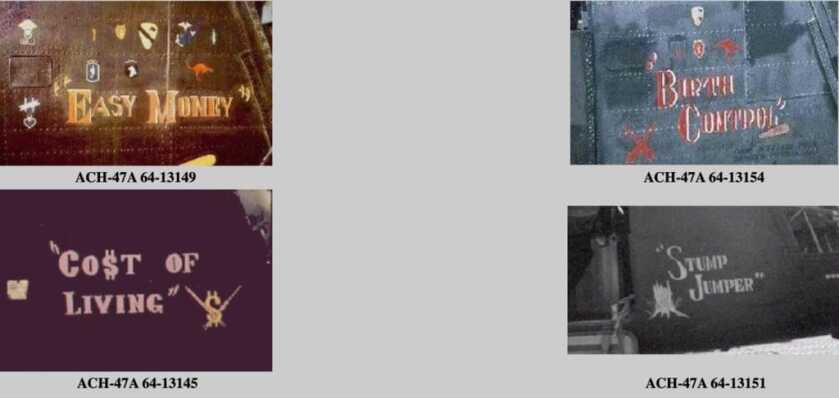
Three aircraft conducted combat operations in-country while a fourth remained behind in the states for further testing at Edwards Air Force Base. The first three operational A/ACH-47A (Armored/Attack Cargo Helicopter) gunships were titled “Easy Money,” “Stump Jumper,” and “Birth Control.” The fourth was christened “Co$t of Living.” Each of these massive aircraft was 98 feet from rotor tip to rotor tip and absolutely bristled with weapons.
Details
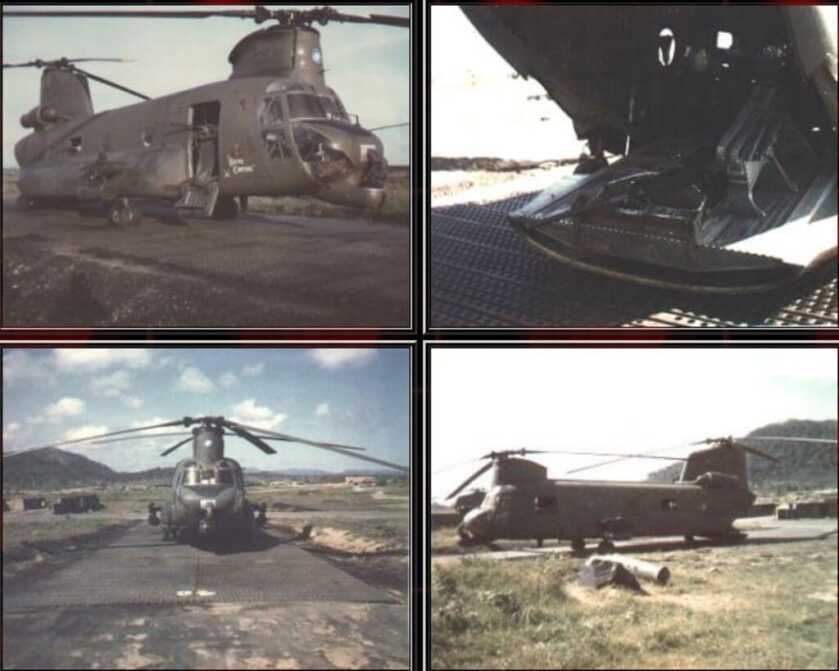
The basic CH-47A was first equipped with extra applique armor protecting the crew and vital mechanical components. This allowed these tremendous aircraft to take a pounding while operating in close proximity to supported troops. Then each aircraft was fitted with five AN/M3 .50-caliber machineguns. The AN/M3 is the fast-firing aircraft version of John Moses Browning’s apparently perfect Ma Deuce.
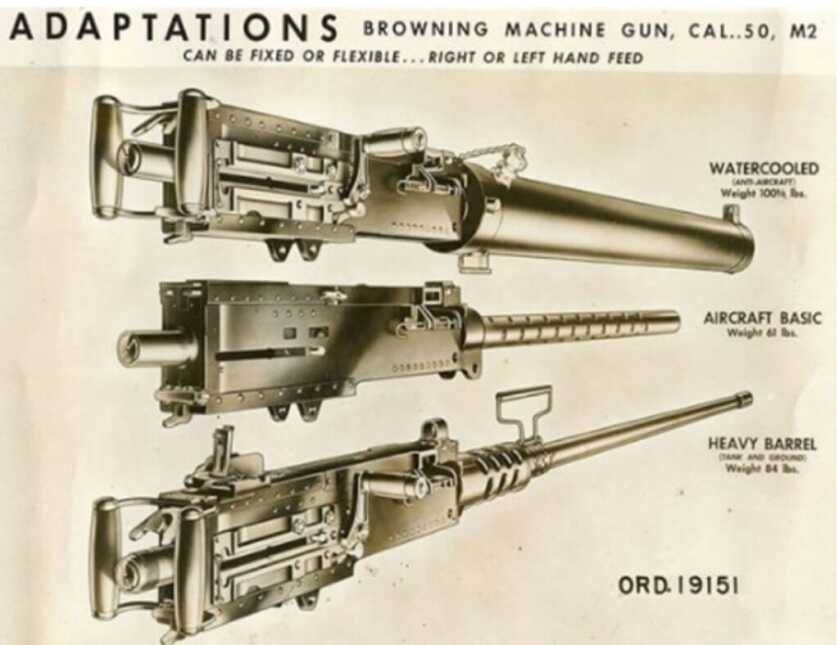
John Browning developed the .50-caliber in response to specifications penned by Black Jack Pershing himself, the commander of the American Expeditionary Forces fighting in WW1. Originally designed to counter observation balloons, the big .50 went on to become the longest-serving Infantry weapon in American history. The gun soldiers on essentially unchanged atop MRAP vehicles and Abrams tanks even today.
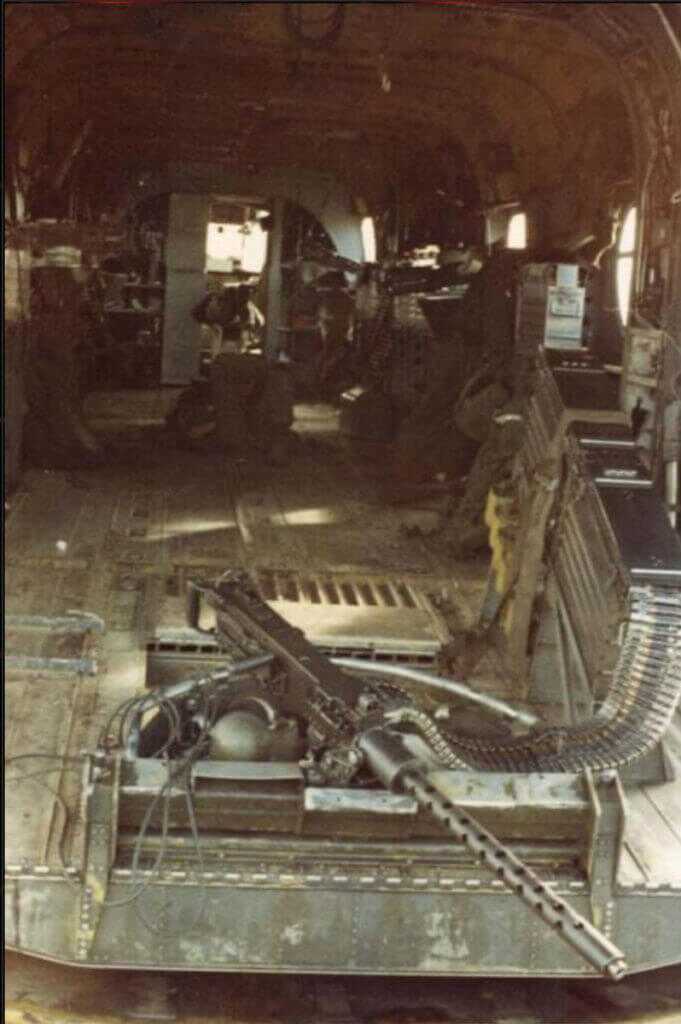
The AN/M3 sported a full-length perforated barrel shroud and a lightened bolt assembly. This resulted in an accelerated rate of fire of around 1,100 rounds per minute. These guns were mounted two per side of the A/ACH-47 firing through the windows with a fifth gun mounted on the aft ramp.
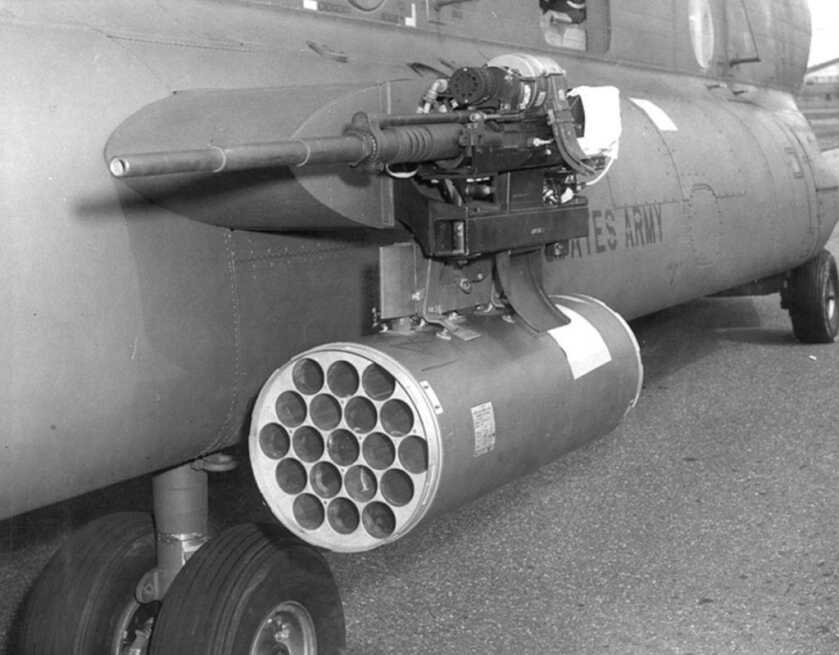
One XM34 M24A1 20mm automatic cannon was mounted on each side of the aircraft in a fixed hardpoint. An evolutionary development of the HS.404 Hispano-Suiza 20mm cannon, this weapon fired a 20x100mm high explosive round and cycled at 700 rounds per minute.
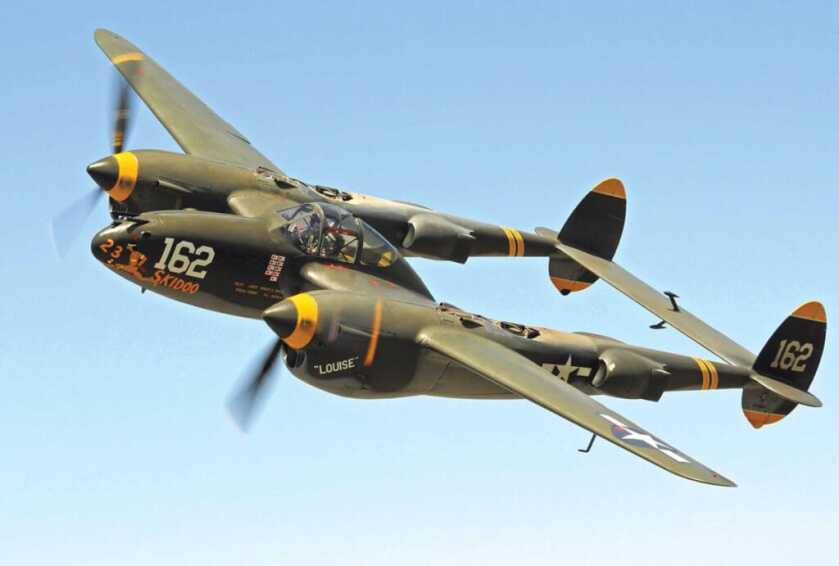
These guns were similar to the single 20mm cannon mounted in the nose of the WW2-era P38 Lightning fighter.
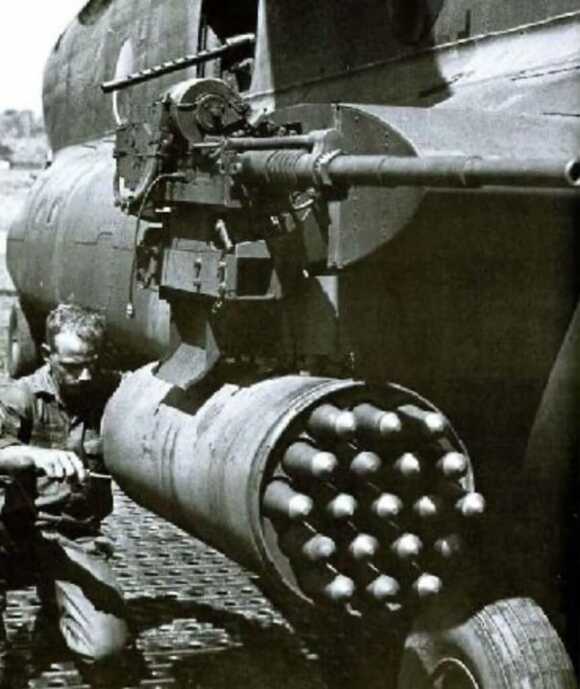
These bilateral sponsons also included mounting points for either 19-shot XM159 2.75-inch rocket launchers or M18 7.62x51mm Minigun pods. 2.75-inch FFAR (Folding Fin Aerial Rockets) typically carried either ten or seventeen-pound HE warheads. They could also be fitted with White Phosphorus or Flechette loads as well as smoke markers or parachute illumination rounds. This system evolved into the Hydra 70 rockets fired by AH-64 Apache gunships today.
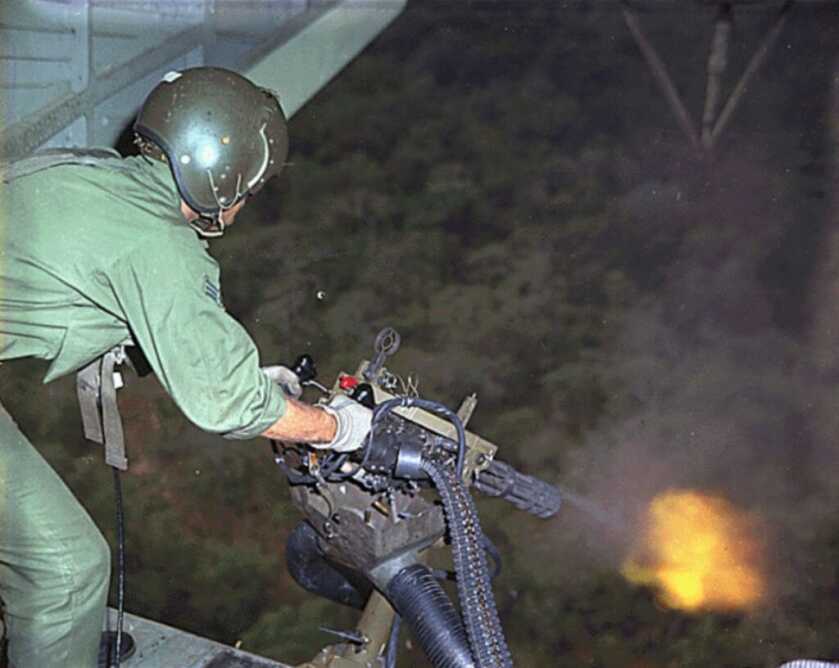
The GAU-2/M134 Minigun was a General Electric contrivance that featured a six-barrel gun system with an electric drive. The gun came in three basic variants, each characterized by slightly different rates of fire ranging from 2,000 to 6,000 rounds per minute. American forces used roughly 10,000 GE miniguns during the course of the Vietnam war.
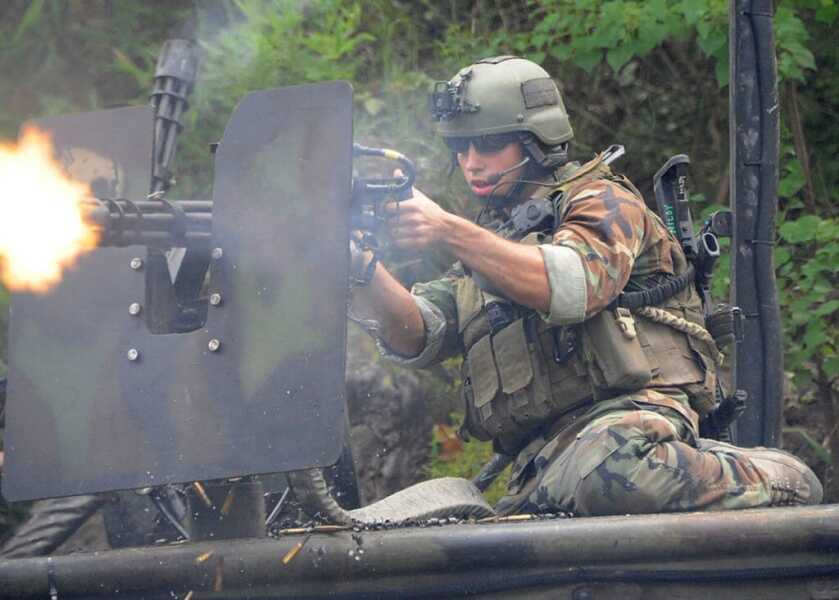
An upgraded version of the same system is used by troops operationally today in the form of the Dillon Aero M134D. Featuring a titanium housing and rotor these new Dillon guns have a 1.5 million-round lifespan. The US military currently employs M134D’s on special operations helicopters, small boats, and select terrestrial platforms like the Special Forces GMV (Ground Mobility Vehicle) Humvees.
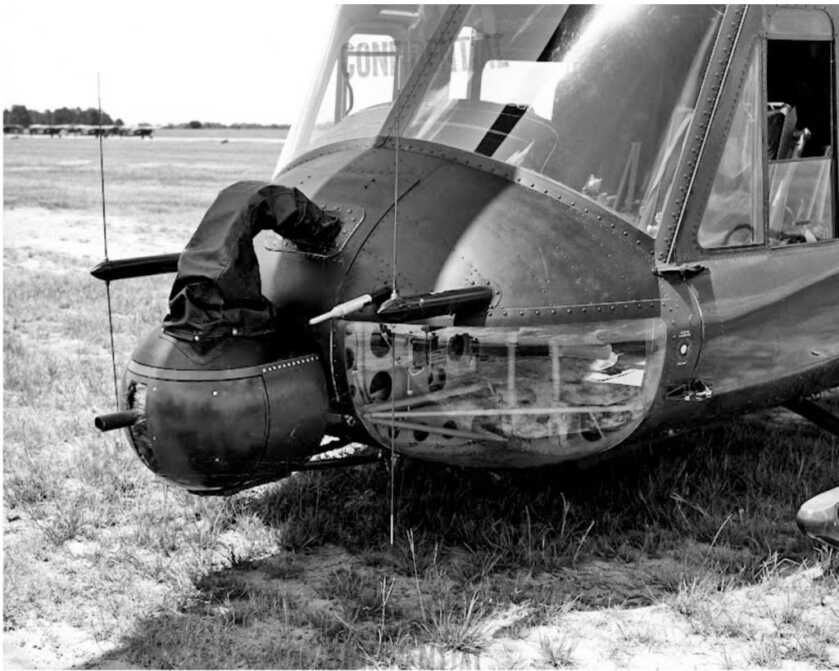
The M5 automatic grenade launcher fired high-velocity 40x53mm HE grenades that were not interchangeable with the 40x46mm grenades fired by the M79 and M203 launchers. The M5 was an air-cooled, electrically-powered gun system driven by aircraft power. The M5 featured a 225rpm rate of fire and a maximum effective range of 1,870 meters. Today’s highly-effective Mk19 40mm automatic grenade launcher is a recoil-operated evolution of the same basic concept.
The Rest of the Story
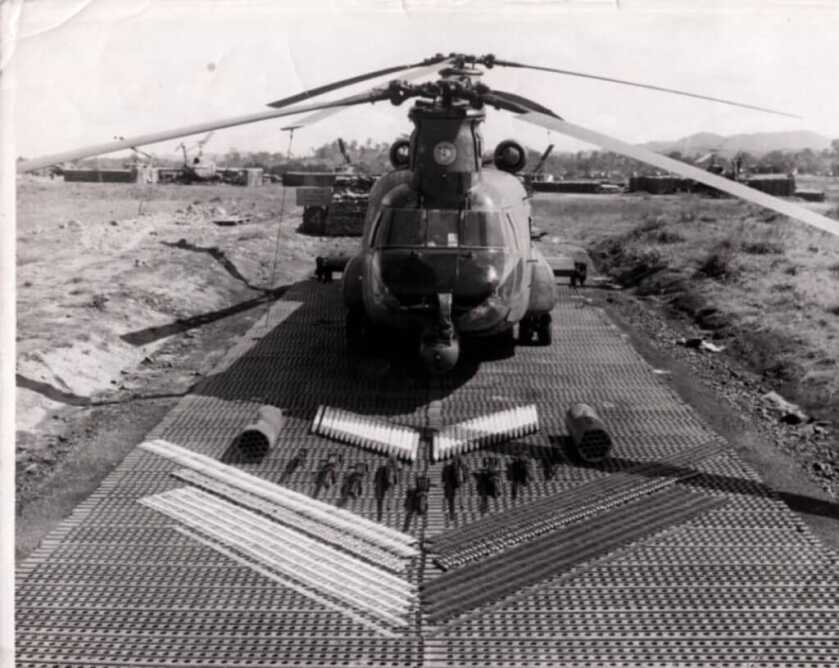
Guns-A-Go-Go turned the tide for the Wolfhounds that fateful day in July of 1966. Despite such overwhelming firepower this single company still suffered a horrific 26 KIA and 34 WIA out of a total of 98 troops that hit the LZ. Survivors freely acknowledge that the butcher’s bill would have been massively worse had it not been for the big Go-Go-Birds.

Helicopter gunship operations were in their infancy during this time, and the learning curve was steep. In August of that year “Stump Jumper” was destroyed in a ground taxi accident with another Chinook. This event drove the Army to retrieve “Co$t of Living” from California and deploy it as a replacement to Vietnam.

In May of 1967, one of the M24 20mm guns on “Co$t of Living” vibrated loose on its mount during a fire support mission and rotated upward to discharge into the rotor system. These high explosive rounds struck the forward rotors and the rotor system disintegrated. The subsequent crash tragically killed all eight crewmembers.
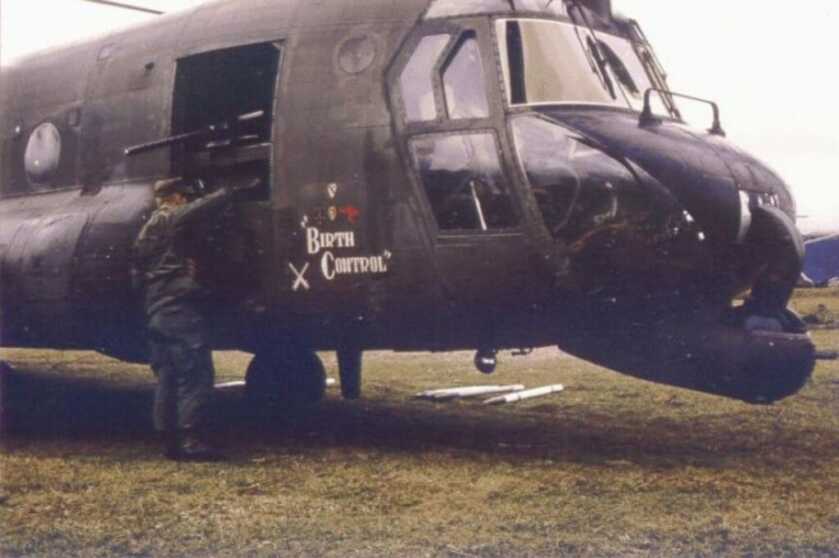
In February of 1968, “Birth Control” was badly shot up during a gun run and autorotated into a dry rice paddy outside Hue. “Easy Money” flew in and positioned herself between the disabled aircraft and attacking enemy, providing heavy cover fire so that the crew of “Birth Control” could exit the disabled aircraft.
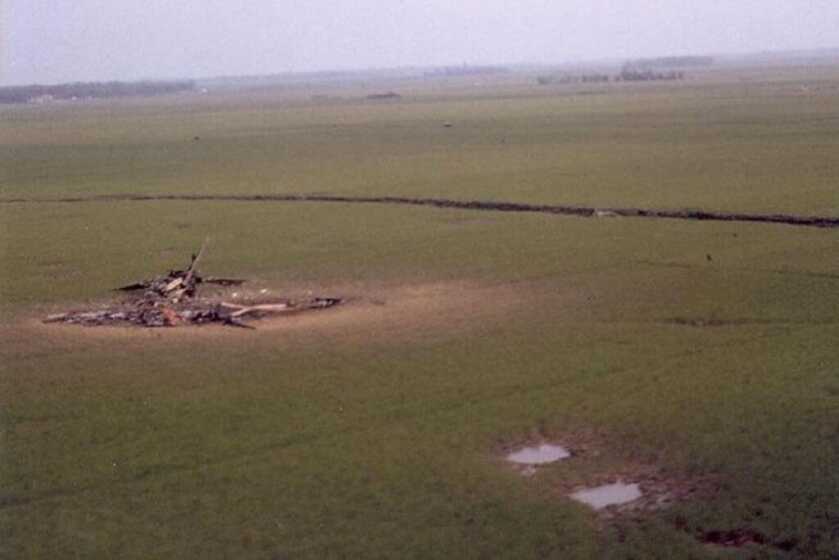
Badly overloaded with the crews and weapons from both helicopters, “Easy Money” fought to remain airborne but still successfully landed at Camp Evans despite damage from ground fire. NVA mortars destroyed “Birth Control” before it could be salvaged, and the Guns-A-Go-Go project was abandoned. AH-1G Cobras assumed the aerial fire support mission, and the rest is history.
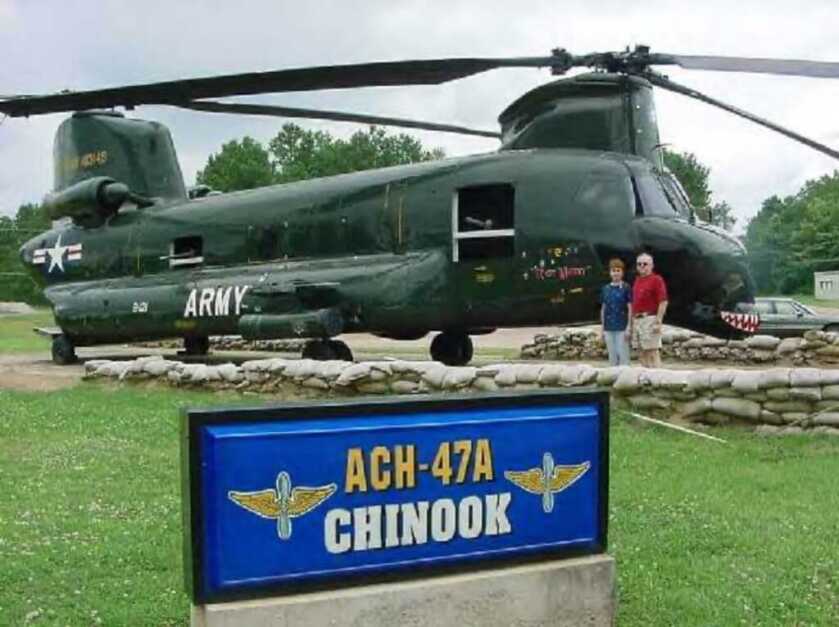
After the Vietnam War, “Easy Money” returned to Fort Eustis in Virginia and was used as a sheet metal trainer. In the late 1990’s she was restored to her combat configuration and in 2000 placed on permanent display at Redstone Arsenal in Huntsville, Alabama. She remains there to this day.
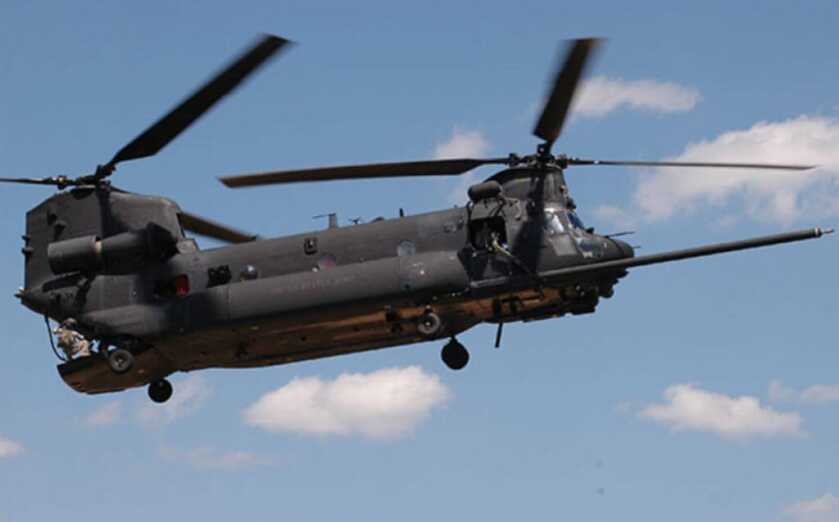

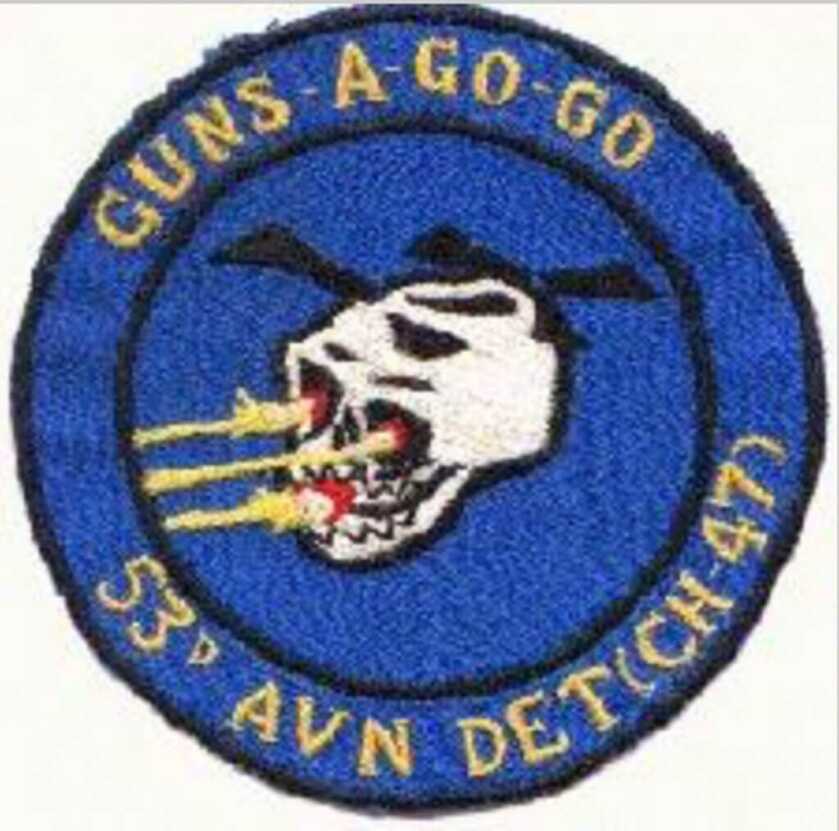
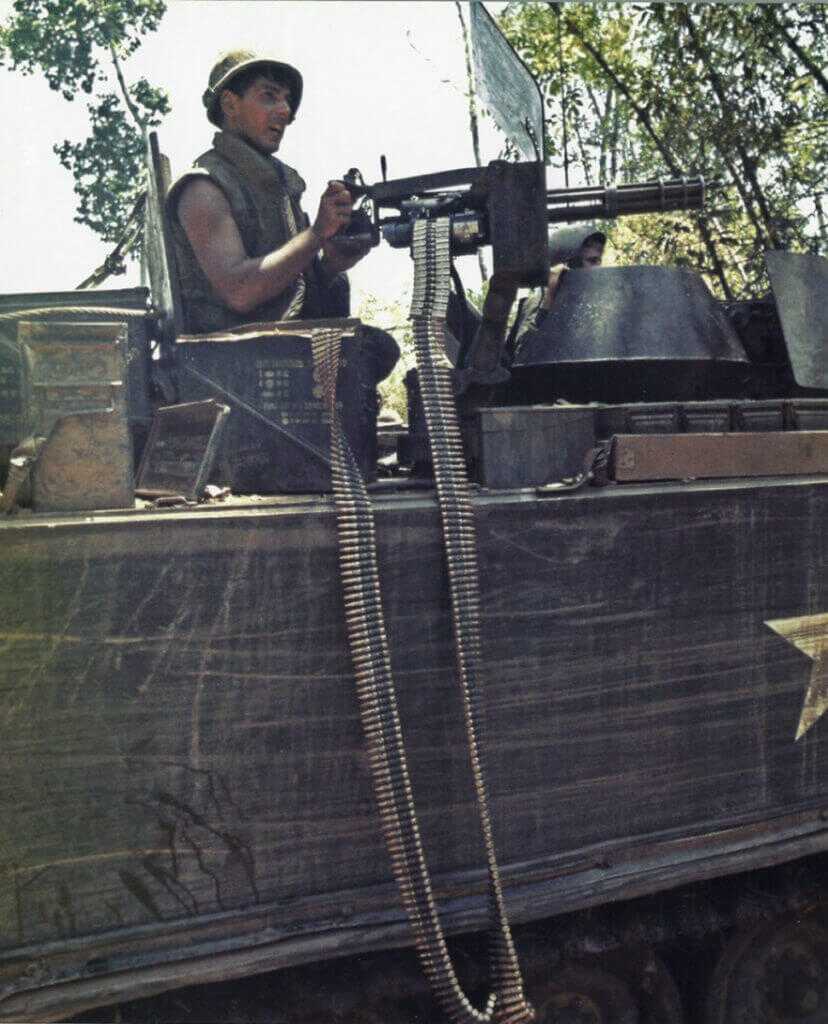


Flew GoGo birds for 10 months with the 1st CavDiv. Wingman on the destroyed A/C. I will say we earned our living.
I’d read about these birds prior to this article but Dr Dabbs literally brings history to life. I don’t recall the Dr writing about the Vietnam War Gun Trucks. It would be interesting to read his take on the 500+ gun trucks that served during the Vietnam War and on into today. I’d like to see what he has to say about them. I could then apply any comments to my Gun Truck “War Wagon”.
Dabbs for the win!
One of Will’s best yet. Absolutely amazing. I always stand in awe of the VN vets.
When you’ve already experienced hell on earth… there is no fear of it in the future! 🧐 🇺🇸
My Dad was with the Wolfhounds in 66 . He would get drunk and tell me stories one which told of these birds. Never knew it was true until I read your article. Thanks
Two thumbs up from a viet nam era AH-1G crew chief.
Great story, but just one question – did Caesar Martinez make it home?
Enjoyed the detail in your article. Appreciate bringing buried history to life.
Very good reading, as usual…Thanks – Will